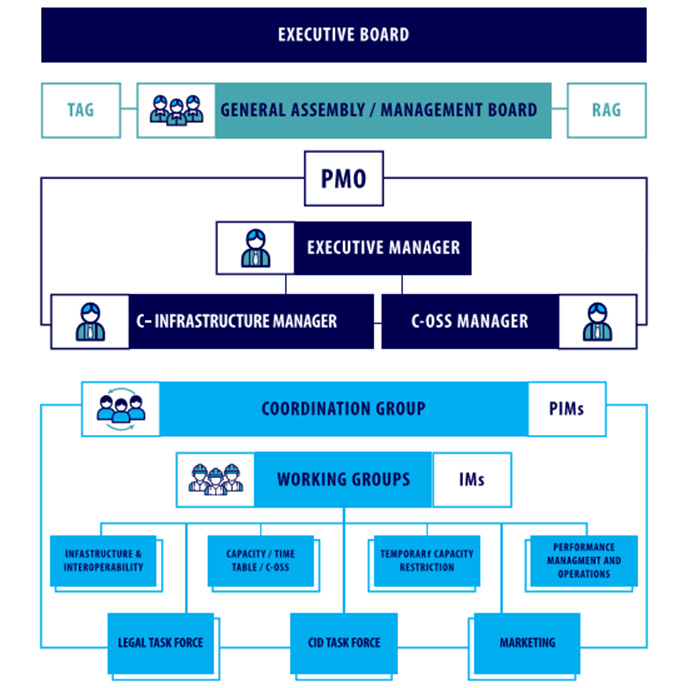The Baltic-Adriatic Corridor's approach has always been to position itself as a platform for fostering cooperation between all players in the logistics chain and to act as a market intelligence provider. Moreover, considering the context in which the Corridor operates and based on past experience, the operational strategy in recent years has been to focus on so-called “soft measures”, i.e. piloting small projects, at relatively low costs, but with immediately measurable results. The advantages of this approach, apart from lower costs, are the possibility to apply corrective actions immediately or, if the projects are successful, to benefit from them immediately, setting a benchmark for other Corridors.
During 2020, the Transport Market Study (TMS), initially carried out in 2014, was updated in order to analyse freight traffic volumes and provide recommendations for the development of the rail freight market along the Corridor.
In 2021, an extensive capacity study was completed with an innovative approach aimed at developing a simulator capable of designing an optimal capacity offer for different time scenarios and taking into account all factors influencing demand, supply and traffic management. The study was launched in 2020 following a standard tender procedure and a summary of it can be viewed on the Baltic-Adriatic Corridor website.
The TMS study is currently being updated after a standard European tender procedure together with the other European Corridors. Delivery is scheduled for the end of 2024.
Since the 2021 timetable was launched, the Baltic-Adriatic Freight Corridor has seen a significant improvement in its performance in terms of rail capacity demand. Meanwhile, since the 2023 timetable was launched the ratio between the volume of requested and offered capacity has stabilised at around one third. The published capacity figures also show a stable supply trend (6.3 million/km for the 2023-2025 timetable). The EEIG continued its customer-oriented approach by maintaining the offer of “Extra Long Train” paths to/from the port of Koper and the pilot project of priority rerouting in the event of an ICM (International Contingency Management) event to freight trains allocated by the Corridor in the countries north of the Corridor).
Also on the capacity supply side, the Baltic-Adriatic Corridor is able to offer train routes during the timetable period that can be requested up to 5 days before the departure of the train (the rule for so-called short-term capacity - reserve capacity - under the European Regulation is at least 30 days).
Finally, the above are examples of the “soft measures” approach described at the beginning and, in particular, the strategy of focusing on the quality of supply rather than quantity, by piloting a so-called premium offer for each railway timetable and analysing the market response.
In terms of transport reliability, the Baltic-Adriatic Corridor applies the “Handbook for International Contingency Management (ICM)”, which defines the procedures to be implemented in the event of incidents affecting international rail traffic in order to minimise their effects. In this context, the Corridor organised annual simulations, one of which involved the Railway Undertakings, and also handled real cases by coordinating teleconferences between the IMs involved. In 2022, the Corridor developed a case study on capacity allocation rules in the case of ICM at the request of the Network of Executive Board.
In the course of 2022, the EEIG obtained a new tranche of EU funding made available under the European “Connecting Europe Facilities (CEF)” programme, contingent on the achievement of a set of deliverables common to all 11 European Freight Corridors.
During 2023, the Corridor worked on the production of the planned deliverables, delivering them all to the European Agency (CINEA).
These include the updating of the Corridor Implementation Plan, with the Executive Board setting efficiency/effectiveness targets. In addition, the Strategy Paper signed in 2021 was updated.
Furthermore, maps were drawn up with graphic indications of the volumes of trains (passengers and freight) that ran on the sections of the Corridor, complemented by information on the share allocated by the Corridor.

